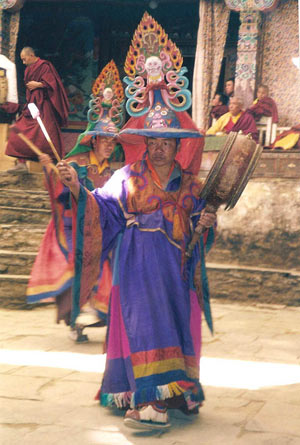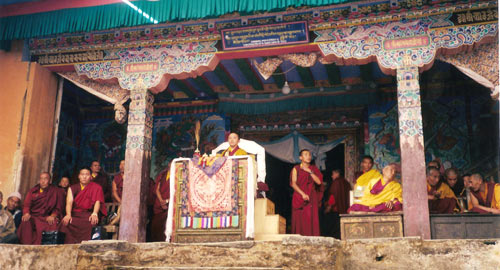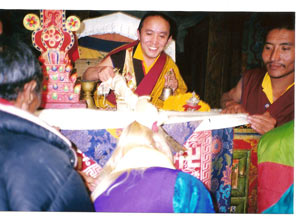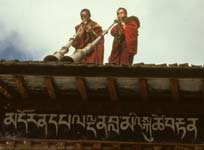Mani Rimdu Ritual

The annual Mani Rimdu festival is two and a half weeks of sacred ceremonies and empowerments culminating in three days of public ceremonies and dances. These ceremonies are led by the abbot of the Monastery who follows the ‘Union of the Blissful’ text. Until his recent passing into parinirvana, Trulshig Rimpoche performed Mani Rimdu at Chiwong Monastery every year for almost 50 years. The schedule below shows some of the ceremonies that are performed in private and in public. The exact schedule may vary depending on location and year.
Mani Rimdu Schedule
Day 1 Preparing the effigy, site ritual, reception ritual
Day 2-5 Making the mandala
Day 5 Making Tormas, Arranging ornaments
Day 6-12 Daily rituals
Day 13 Dance Rehearsal
Day 14 Public Empowerment
Day 15 Masked Dance
Day 16 Burnt offering
Day 17 Invitation to the river


From the Lord of the Dance ritual
In the hearts of the assembled gods, on a lotus, sun
And moon pedestal, there is a hrih, its end
Encircled by very fine mantras.
Radiating light, it worships the Buddhas of the ten directions.
It steeps me in grace and in true achievement.
I purify obstruction, complete accumulation, and obtain the four empowerments.
It strikes living beings in the three worlds and the six migrations,
And cleanses their karma, passion, sin and obstruction.
The world outside becomes a divine palace.
Its inhabitants are perfected as the gods of the circle.
Sounds that resound are the mantra’s own sound.
The mind’s memories and thoughts are the Body of Truth.
Ritual Details
Mandala – during the early stages of Mani Rimdu a colored sand mandala is made, grain by grain, depicting the sacred space for the ceremony. At the center is the diety, Lord of the Dance, Destroyer of Illusion.
Tormas (Zor) are a unique Tibetan art form made from barley flour dough, formed into symbolic sculptures and decorated with colored butter. They are often placed on a wooden armature. They are a form of offering that transforms human consciousness and by that, the world. The main torma of Mani Rimdu is called ‘the achievement torma of the main god’ . It is red in color and also known as ‘the red glorious torma’. It represents a god sitting on top of the world mountain, surrounded by his entourage.
Empowerment – During the empowerment ceremony the audience is transformed into Union of the Blissful/Lord of the Dance/Great Compassion through recitation, visualization and ending with torma blessing, receiving mani pills and sacred nectar. While this is to benefit all living beings, it will also thought to benefit the recipient with long life and health.
Masked Dances – these are performed by monks in elaborate costumes and headdresses. Some of the dances performed are Golden Libation (Black Hat), Ging (2 drums and 2 cymbals), Drum Dance (6 magicians), Liberation Dance (lords of the cemetery and magicians), Dakini Dance.
Burnt offering – This is one of the oldest rituals in South Asia. This is done on the first day of the waxing moon. A small mandala is created in sand on a wooden structure. It is then consecrated and covered with wood (or yak dung) in a pyre. While burning, the monks visualize Lord of the Dance and recite prayers.
